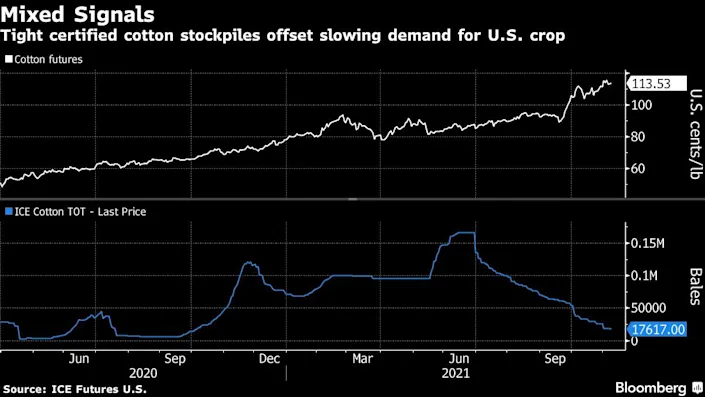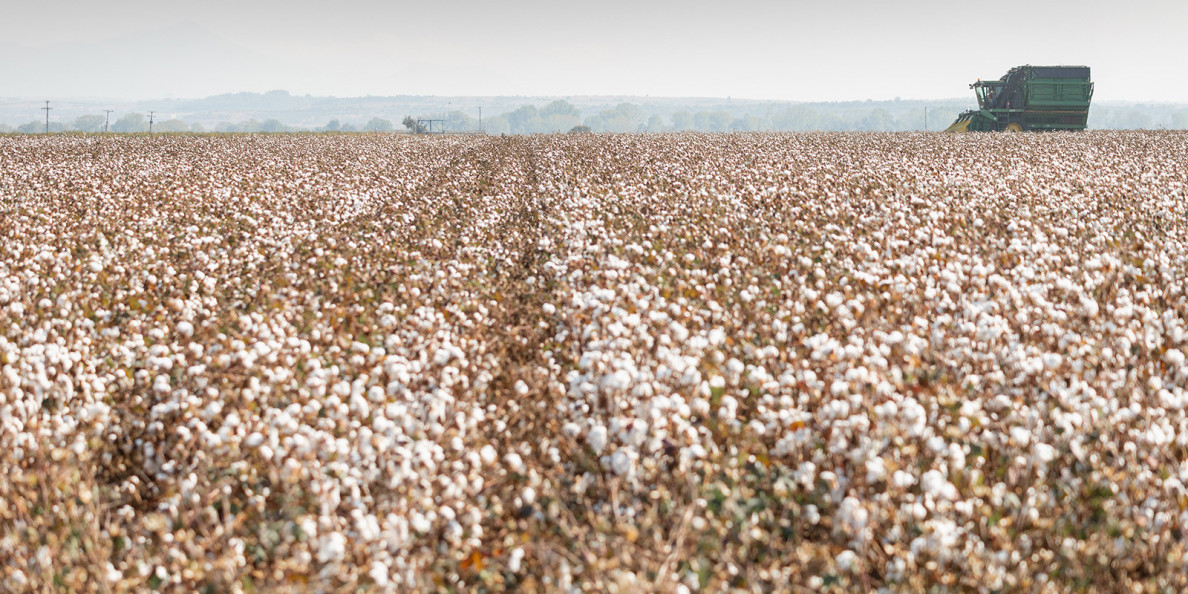Marvin G. Perez
Stockpiles at depots monitored by ICE Futures U.S. in New York fell 4% to the lowest in more than a year amid delays for the American harvest. Last week, government data showed demand for domestic supplies has slowed following the futures rally to 10-year highs.
While bulls are betting China will continue to buy U.S. supplies in big volumes, the country had big cancellations to prior purchases. The weaker sales came as concern emerges the market has begun to lose share to polyester, Ollie Cleveland, a consultant and Mississippi State University economics professor emeritus, said in a Monday report. That’s “conflicting” with expected support from commercial traders, who have a very large unfixed sold position that has to be closed with buying of futures, he said.

The March contract at ICE traded at $1.1333 a pound in New York after earlier climbing as much as 1.1%.
The price is up 45% this year, and last month hit the highest in a decade. The rally left prices on a level that’s very profitable for producers, said Kody Bessent, chief executive officer for Plains Cotton Growers Inc., the biggest grower group in the top-producing state of Texas.
Growers are “very excited” about prices and looking forward to next year’s harvest, he said. The cotton industry, like most sectors around the world, is dealing with shipping delays, high freight costs, surging fertilizer prices and shortages of things like equipment parts.
Growers also will have to weight those challenges against better prices for other crops. The break-even level for most state cotton farmers to cover costs is between 80-85 cents a pound, he said.
Πηγή: Boomberg

